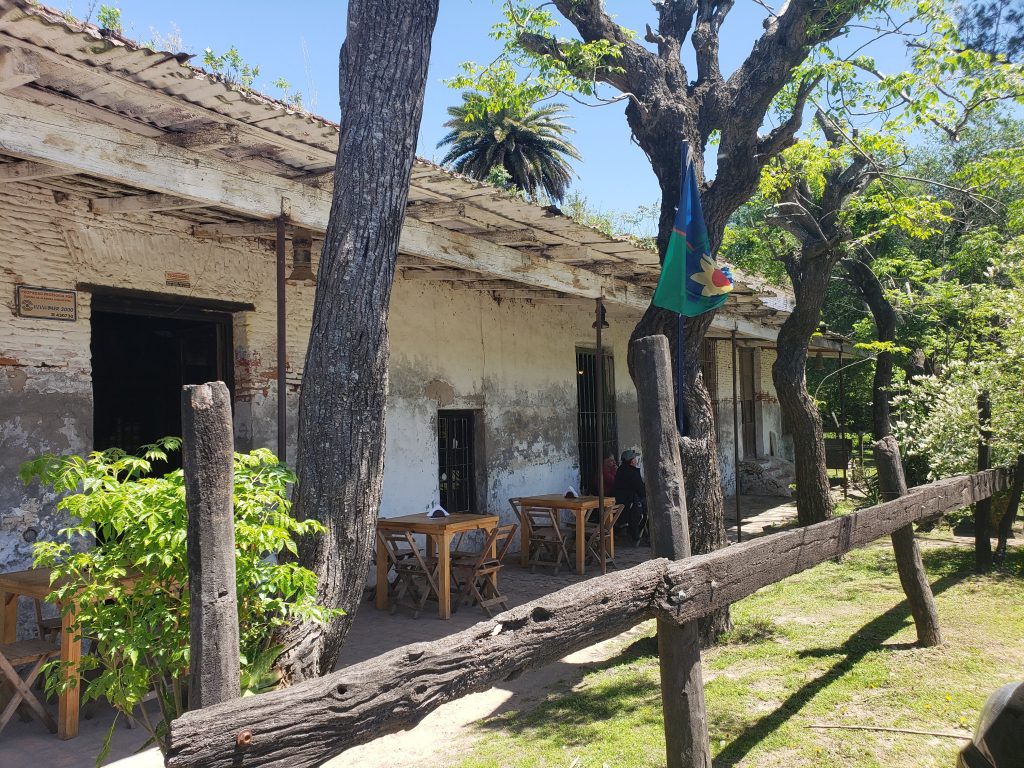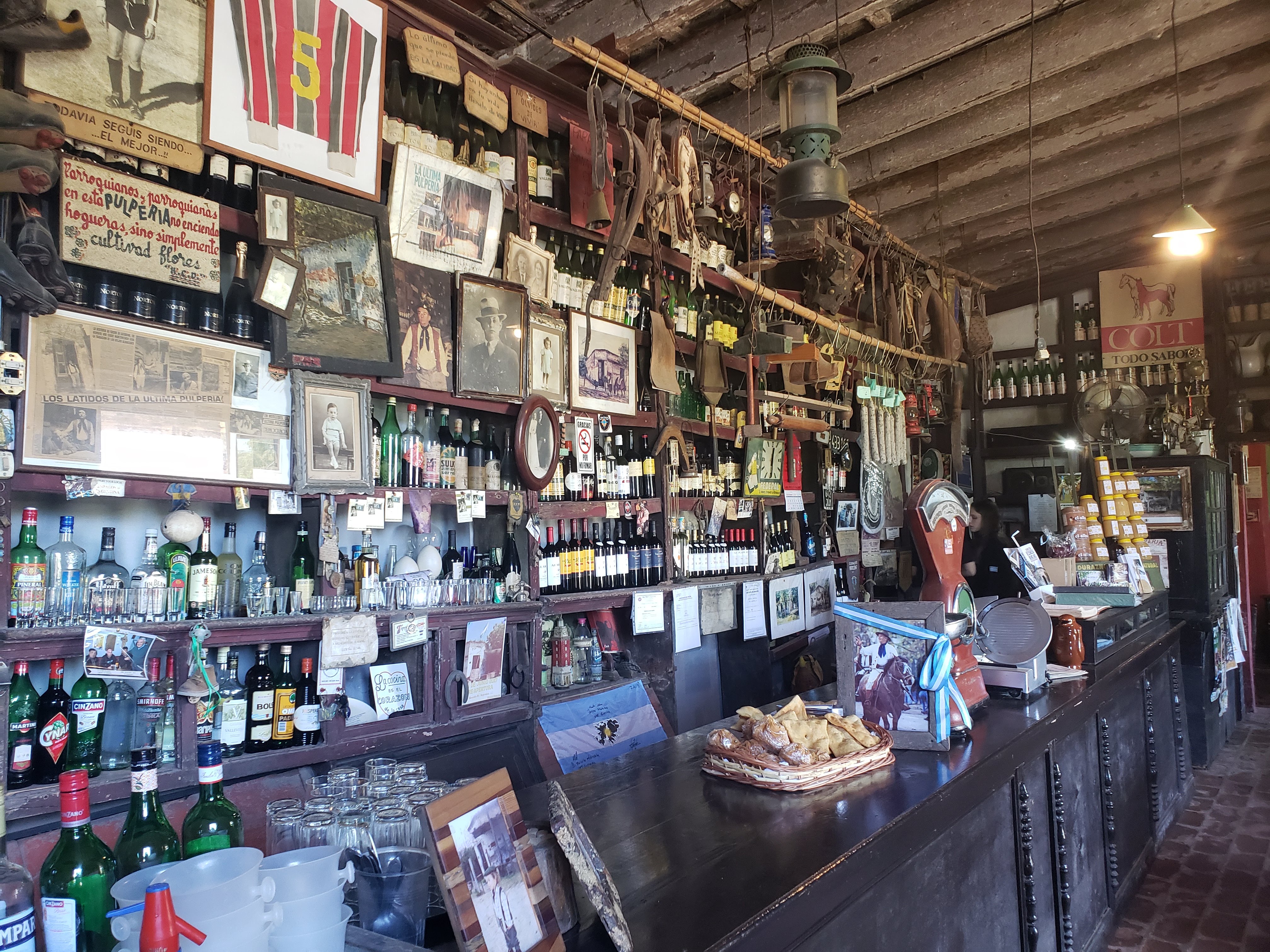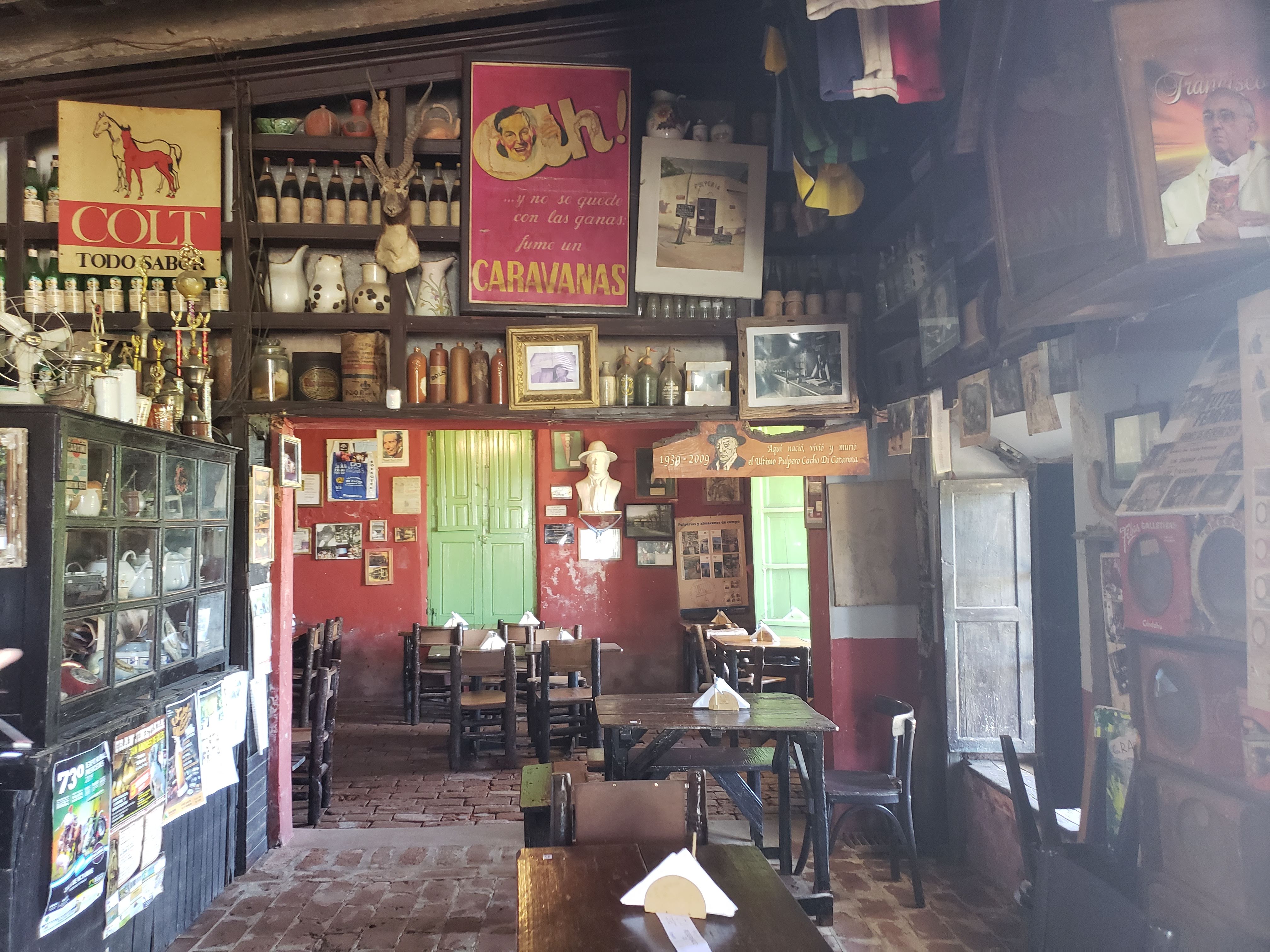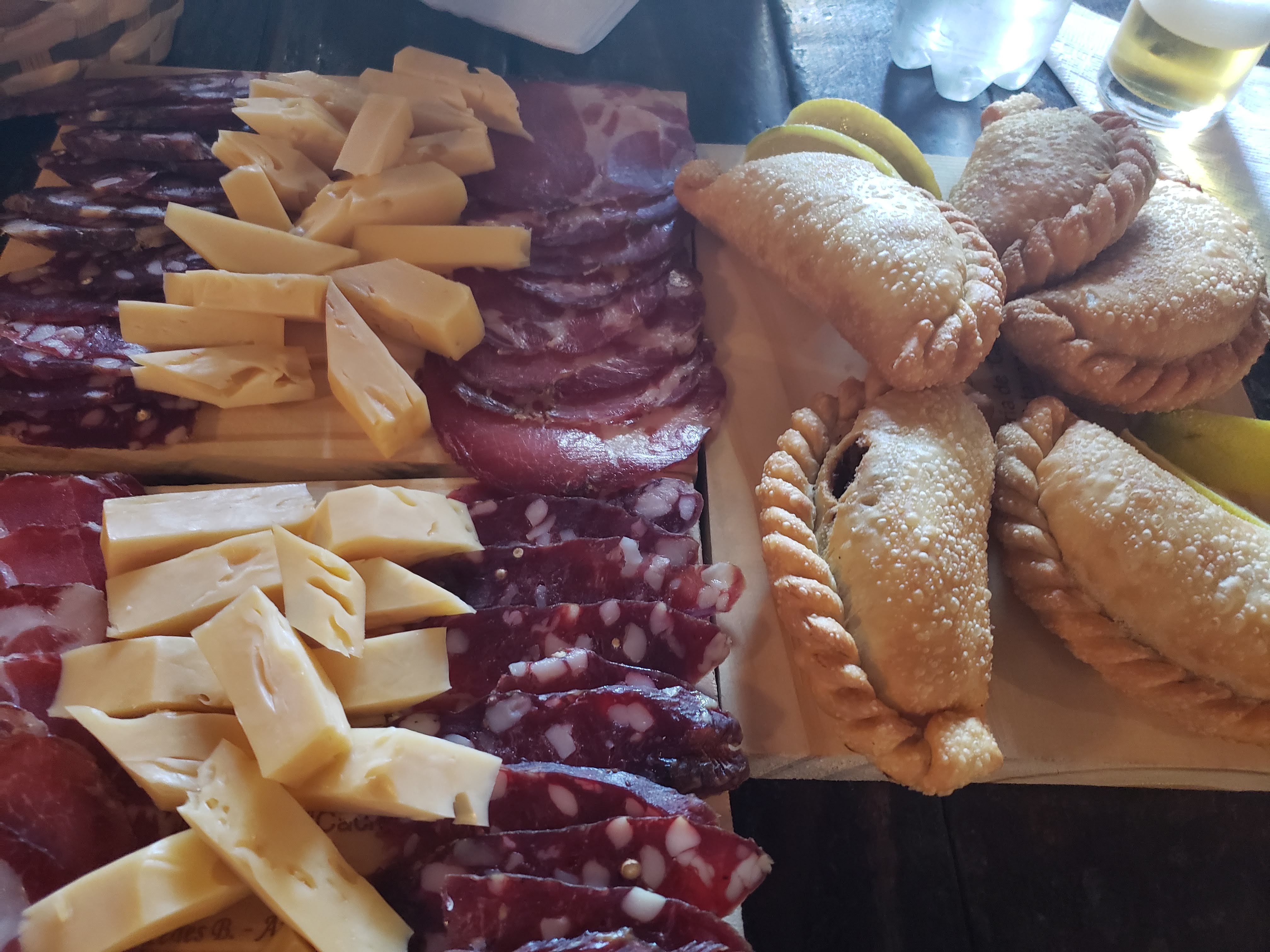Pulperías: Where the gauchos gathered

Imagine spending days, even weeks, in the vast plains with only your horse and your loyal dog for company. Herding cattle during the day, sipping mate next to the campfire at night. The need for human interaction will be met at the nearest pulpería, although near and far are relative terms in the Argentinean Pampas. Deliver the cattle to the port first or take it to a distant pasture and only then you can relax and stock up on staples.
These taverns known as pulperías were one-story constructions with clay brick walls and a roof made of wood and tin. In rural establishments, the pulpero — proprietor — stood behind a wide wooden counter protected by iron bars, well beyond the reach of sharp knives in the event of a fight. There was no need for that kind of protection in urban pulperías. The third type was the itinerant taverns, or pulperías volantes. These consisted of huge wagons that crisscrossed the Pampas following the harvests — or fleeing the authorities, as they were outlawed in 1831.
The earliest pulpería on record was that of Ana Díaz, one of the women who accompanied the Spanish explorer Juan de Garay when he founded Buenos Aires for the second time in 1580. Mrs. Díaz was given a land grant as a pioneer. She established her business in what is now the financial district. Ironically, four centuries later a fast-food chain opened on the same spot, in the modern-day intersection of Avenida Corrientes and Florida. By 1810, there were about 500 pulperías in Buenos Aires alone.
Like the Western saloons, the pulperías of the Argentinean pampas functioned as taverns, way stations, and general stores. Some even had a dancing floor and a small stage where itinerant companies performed. The pulperías played other roles as well. This is where ranch owners hired unemployed gauchos to round up cattle or to defend their land, and where politicians canvassed for votes.
In his article titled Comparative Frontier Social Life: Western Saloons and Argentine Pulperias, Richard W. Slatta describes the functions of both frontier institutions. The saloons operated as courtrooms, churches, political arenas, trading posts, post offices, and banking institutions, as many tavern keepers loaned money. The pulperos, on the other hand, “sold liquor, basic necessities and the gaucho’s favorite vicios (mate tea and tobacco).” They also sold on credit, bartered and even threw stuff in for free. That free stuff is known as yapa.
Gauchos came to the pulperías to socialize after long days of hard, solitary work, just like cowboys did at the Western saloons. Socializing usually involved heavy drinking. While cowboys favored whiskey, the gauchos‘ drinks of choice were grapa (grape brandy), ginebra (gin), wine, and aguardiente (rum). It was customary to pass round a big glass of aguardiente for everyone to take a sip. Rejecting the proffered drink was considered an offense. And a real or imaginary offense may lead to a fight.
Heavy drinking, combined with a healthy dose of machismo, made aggression and violence more likely to happen. Knife fights were the norm. The gauchos were dexterous with their facones, long sharp knives, and sometimes a drunken fight ended up in the death of one or more rivals. The objective of a duel, however, was to mark the face of the adversary, not to kill them.
Drinking was not the only social activity that took place in pulperías. Gambling was prevalent in the form of a game of cards called truco or the taba, a dice-like game where players threw the knucklebones of cattle. Payadas, a musical competition where one gaucho improvised verses and another tried to come up with a witty response, were also very popular. Gauchos showed off their horsemanship at carreras cuadreras (sprints rather than races) and carreras de sortija, where the rider had to bear off a ring suspended from a cross beam using a twig while at full gallop.
Illicit activities like prostitution also took place in the pulperías. The arrival of itinerant madams and their girls was cause for celebration. The semi-nomadic life, combined with restrictions imposed by some ranch owners, made it difficult for gauchos to settle down and marry. In many cases, prostitutes were the only female company gauchos enjoyed.
According to Slatta, “… the growth of cities spawned new specialized services and institutions that supplanted the multifunctional saloon. As “civilization” overtook the frontier, saloons of the West and pulperías of the Pampa lost both their clientele and their monopoly on services. While they lasted, both exhibited similar functions and similar saloon cultures.”
Nowadays, the handful of pulperías that survived have become restaurants as well as tourist attractions. Their owners have made every effort to preserve them as they once were. Wide wood counters, dusty old bottles lining the walls, antique aperos — old farming tools — hanging from the walls, and sepia-toned photographs help patrons get a sense of what the place must have been like in the heyday of the gaucho.
The oldest extant pulpería dates from 1817 and is called La Esquina de Argúas. It’s located in the county of Mar Chiquita, a four-hour drive south of Buenos Aires. Closer to the city is La Pulpería de Cacjo in the town of Mercedes, only 65 miles due west. It has been in business since 1830 and is famous for its succulent beef empanadas, as well as being a film location. As cliché as it sounds, visiting a pulperia really feels like going back in time.
Sources:
Comparative Frontier Social Life: Western Saloons and Argentine Pulperias published in the Great Plains Quarterly Vol. 7, No. 3 (SUMMER 1987), pp. 155-165
Las Pulperías, El Historiador online magazine
COVER: Photo taken by Ana Astri-O’Reilly
Book Your Stay Now in Pampas, Argentina
Use the interactive map below to search, compare and book hotels & rentals at the best prices that are sourced from a variety of platforms including Booking.com, Hotels.com, Expedia, Vrbo, and more. You can move the map to search for accommodations in other areas and also use the filter to find restaurants, purchase tickets for tours and attractions, and locate interesting points of interest!

Ana Astri-O’Reilly is a fully bilingual travel blogger and writer originally from Argentina. She has published travel and food articles in a variety of outlets and is active on social media platforms. You can read her musings, memories, and other writing here.


